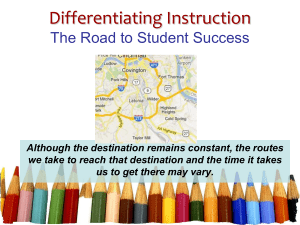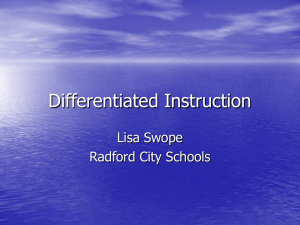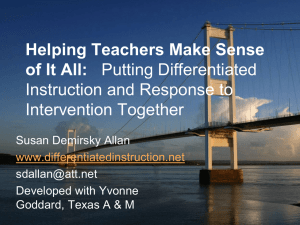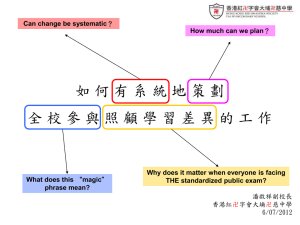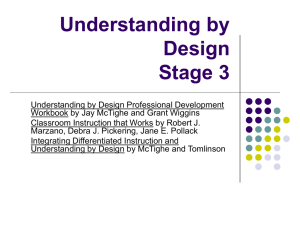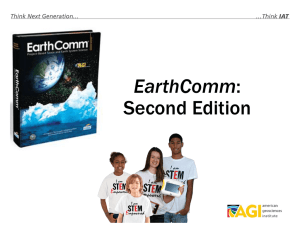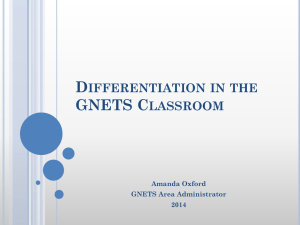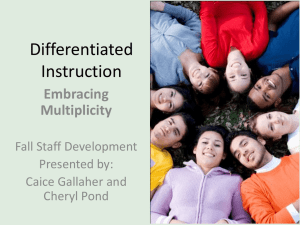Small Group Differentiated Instruction
advertisement
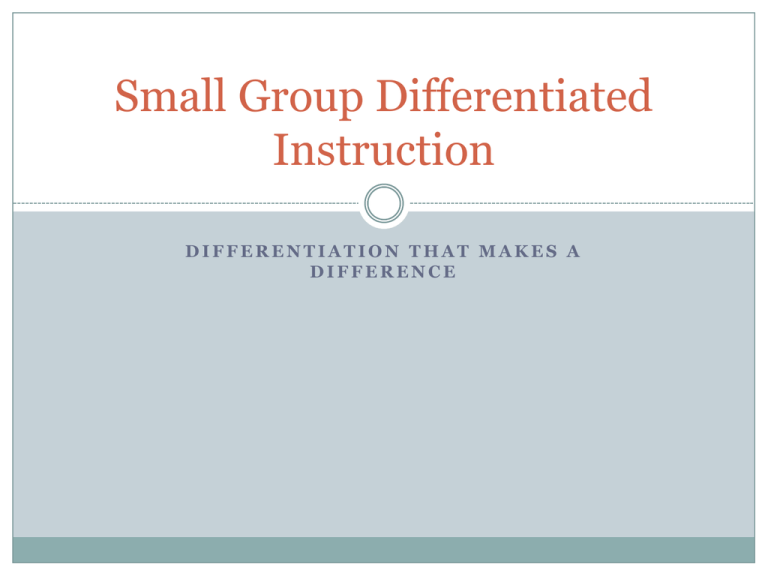
Small Group Differentiated Instruction DIFFERENTIATION THAT MAKES A DIFFERENCE What is Differentiated Instruction? Definition Examples How I currently differentiate Differentiated Instruction Non-Examples Why Differentiate with Small Group Instruction? Meet developmental needs of students Teach to student’s instructional level Stretch student thinking Opportunities for interaction Essential Question How can I effectively differentiate small group instruction to meet the needs of all students? Differentiation of Instruction Differentiated Instruction is a teacher’s response to a learner’s needs respectful tasks clear learning goals Content guided by general principles of differentiation, such as flexible grouping Teachers can differentiate Process ongoing assessment & adjustment positive lrng. environment Product based on students’ Readiness Interests Learning profiles Tomlinson, The Common Sense of Differentiation, ASCD, 2005 OPTIONS, FDLRS Action Resource Center Literacy Translation Students read books at different levels of complexity to access core content (content) Engage in activities with different degrees of teacher and peer support in accomplishing their learning goals (process) Complete different follow-up tasks as evidence of their achievement (product) Consider the Content HIGH LOW Complex text ……………………………………………………………………… Simple, clear text Short and longer text ………………………………………………………… Mostly short text Mostly comprehension ………….. Balance comprehension with other literacy needs Comprehension focus: Mostly on discussion …………….……………. Mostly on basic construction of meaning and reinforcing skills and strategies Consider the Process HIGH LOW More independent completion of reading ………………. Reading completed during group time Brief review of a reading strategy …………….. Reteaching of a strategy that includes explaining and modeling Little prompting needed to find evidence ……………………. More prompting needed Read longer text chunks/self-monitor ...................…. Shorter text chunks to scaffold thinking Less revisiting of text …………………………………………………….. More revisiting of text Consider the Product HIGH LOW Do extensive independent reading of just-right books Do written response independently ……………………..…….. Do written response with supports Do other follow-up tasks independently ……….……… Do other follow-up tasks after thorough teacher explaining/modeling with progress monitoring Process Content Revisiting text (second reading) Review base words for word sort (demonstrate for students) Briefly discuss new vocabulary Students will read chunks of text independently Model finding text evidence to support character traits Model comparing characters using a Double Bubble Product Main selection from Treasures Skills – Story Elements (characters) Compare/Contrast Vocabulary – Frontload words students will need to think about Word Work – word sort- Adding –ion (create-creation) Fluency – Ongoing throughout week; students will read evidence aloud Process On-Level Readers Complete word sorts in literacy centers Complete Double Bubble Map (comparing two characters from story) Content Revisit text 3 different times; each time focusing on something different Explicit & direct instruction of vowel consonant silent –e (white boards) Reinforce phonics skill in connected text Explicitly teach vocabulary prior to reading Students will partner read text; teacher will lean in and listen Model finding text evidence to support character traits Prompt and support students in finding evidence in text Model the process of how to complete a Bubble Map with supporting evidence (at least 3 character traits) Do similar word work or word sorts at literacy centers Complete at least one more character trait on Bubble Map Product Product Shorter, less complex text (possibly below grade level) Skill – Story Elements (characters) Fluency- phrasing, chunking text Word Work – phonics skill - vowel consonant silent –e Comprehension – constructing meaning using retelling/summarizing Process Below-Level Readers Product Process Content Above-Level Readers Readers Theater (more complex, longer text) Skills – Story Elements (characters) Point of View Genre - mythology Vocabulary- Frontload words that may be new to this genre Word Work – word sort – Greek and Latin amounts (magni, min, equ, omni) Fluency – Reading a script with prosody Discussion focus – How characters are perceived differently Students read text as a group before meeting Discuss vocabulary students noticed as they were reading Review and discuss how knowing the Greek and Latin roots may have helped with meaning Review point of view Teacher facilitates discussion focusing on characters and how others may perceive them Teacher explains directions for both Bubble Maps Students practice Readers Theater script and perform for peers Complete Bubble Maps independently “Differentiated instruction is a way of thinking, not a formula or recipe.” Tomlinson and McTighe (2006), p.10. Diner Menu – Small Group Differentiated Instruction Appetizer (Everyone Shares) •Write your definition of differentiated instruction. Entrée (Select One) •Write 3 ways you currently differentiate instruction in you classroom. •Write 1 way you can change how you currently differentiate instruction. •Write the first name of a student who would benefit from differentiated instruction. Side Dishes (Select Two) •How would you rate yourself on how well you currently differentiate small group instruction? (Scale 1-10, 1 being the lowest) •Name one thing that you will take away from this presentation. •Add something new to your Circle Map. •Write one question you still have. Dessert (Optional) •Collaborate with your peers to gather new ideas for small group instruction. •Form new reading groups based on instructional level and need.

